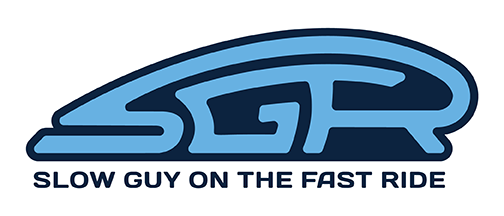Lots of add-ons and upgrades have hit the market since Zwift entered the scene and changed the way we ride indoors. Few of those upgrades are as significant as Zwift Play. While other accessories accentuate the riding experience in the virtual landscape, Zwift Play allows you to interact more directly with that world, right from your handlebars.
What is Zwift Play?
Gamers will recognize Zwift Play for what it is immediately. Put simply, they’re controllers. There are two of them, one for each side of the handlebar. Each Zwift Play controller mounts using a silicone band similar to those used on popular tail lights.
The left side controller features up, down, left, and right arrows to navigate in-game menus and features. The right side control features selection buttons to activate specific features within the game.
And each controller is integrated with a bright orange paddle beneath the buttons. These paddles act as brake levers within the game, and they allow riders to steer within the game as well.

Just outside of each paddle is a thin button you can press with your index finger. This controls trainer resistance up and down.
The Zwift Play controllers are available now and are sold as a set for an introductory price of $100. Later in the fall of 2023, the price will go up to $150. The box includes the two controllers and a Y-shaped USB-C cable for charging.
The first time riders use the Zwift Play controllers in Zwift, they will be led through the pairing process on a new pairing screen. From there, riders will get a tutorial on what each controller button can do.
According to Zwift, many of the features Zwift Play activates in-game are still in beta mode — hence the introductory price. But those features are expected to be well-refined within a few months.
Why is Zwift Play important?

“Navigating Zwift can be difficult if you don’t have the right equipment,” says Chris Snook, Zwift’s Director of PR and External Communications. Since most Zwift users are on computers or laptops set far away from the handlebars, those users don’t often use the action bar that accesses most features. Touchscreen users — like those riders using iPads or phones — are three times more likely to use the action bar, since it’s right at their fingertips. Snook says that overall, only 15% of Zwift users actually use the action bar.
Zwift Play hardware allows riders to have all the access you’d have from your computer, but right on your handlebars. Aside from simply accessing the action bar, the selection buttons allow you to quickly use some of Zwift’s newer features. You’ll be able to shower other riders with thumb’s ups with the push of a single button; you can use your power-ups by pressing and holding a selection button; you can teleport to a robo pacer or to a friend in game; you can skip workout blocks and change your FTP bias; and more.
The braking and steering capabilities impact Repack Ridge significantly. Repack Ridge is Zwift’s time trial course, and it’s been outfitted with features that will slow you down, speed you up, and give you time bonuses if you steer into them. You can now brake into corners so you can aim for these bonus bits, too. And steering allows you to draft other riders or shake them off entirely.
What’s it like to ride with Zwift Play?

I had a chance to use Zwift Play recently at the Rapha Clubhouse in Boulder, Colorado. And after just a few minutes using the handlebar-mounted controllers, I was convinced that Zwift Play is the most significant upgrade to your indoor riding experience we’ve seen in quite a long time.
Zwift Play alters the way you interact with the virtual environment and allows you to quickly and easily utilize all the in-game features you’ve perhaps been ignoring so you don’t sweat all over your keyboard. While other advancements — like Wahoo’s Kickr Climb or Headwind — accentuate the riding experience, Zwift Play enhances and improves your overall control like few other devices have in the past.
Using the steering features certainly takes some getting used to. The Zwift Play paddles are quite sensitive, so it takes just a light touch to move the rider in-game. Braking also takes a bit of a learning curve, but I found myself using the braking feature far less than the steering feature. I can see the brakes being useful for TT riders who want the fastest line through corners. But to me, the steering was a much more fun and engaging experience.
Using the top buttons to navigate menus and select in-game features becomes intuitive the more you use them. I definitely found myself forgetting which button did what, but I suspect more dedicated gamers will have no problem adjusting to the layout. And for old farts like me, the learning curve won’t take too long either. There are only so many buttons, and muscle memory kicks in before too long.
Is Zwift Play worth it?

Based on my short time on the Zwift Play units, I can say with some certainty that the controllers will definitely improve your experience using Zwift. It’s hard to say that about many other pieces of equipment that have come our way in recent years. At the $100 introductory price, Zwift Play is a no-brainer. And that $150 price tag later in the fall will only seem more enticing as Zwift refines the in-game features.
I’ll be doing a long-term test of Zwift Play as soon as review units become available.


